|
Stupas
and Chörtens in the Kathmandu Valley
|
|
Chörtens, or stupas, were originally built to house the cremated relics of the historical Buddha Sakyamuni and as such have become a powerful symbol of Buddha and his teachings. Chörtens
are highly symbolic. The five levels represent the four elements and
eteranal space: the square base symbolizes earth, the dome is water,
the spire is fire and the top moon and sun are air and space. The 13
discs of the ceremonial umbrella can represent the branches of the tree
of life or the 10 powers and three mindfulnesses of the Buddha. The
top seed pinnacle symbolises enlgihtment and in fact the chörten
as a whole can be seen as a representation of the path to enlightenment.
The construction can also physically represent the Buddha, with the
base as his seat and the dome as his body. -Lonely Planet Guide, TIBET |
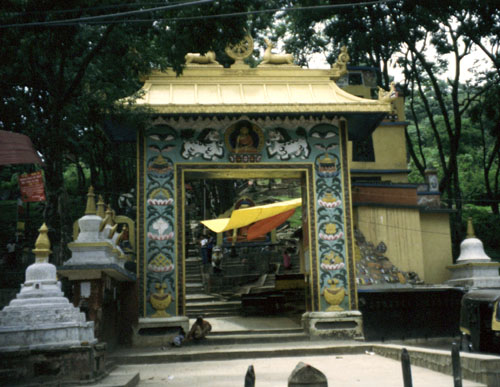 |
|
Entrance
to Tantric Buddhist consider this site to be the chief power point of the Kathmandu Valley. One chronicle states that an act of worship here carries thirteen billion times more merit than anywhere else. |
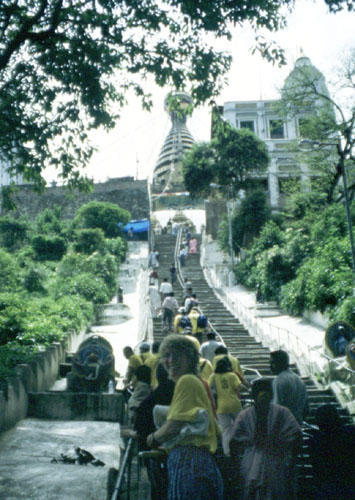 |
|
Stairs to Swayambhunath The Yatris dressed in the yellow Yatra t-shirts climb the stairs to the Stupa of Swayambhunath. Rajeshwari turns to smile for the camera. |
|
|
|
Swayambhunath Here can be seen the all-seeing eyes of Adi-Buddha (primordial Buddha) These eyes are painted on four sides staring in the four cardinal directions. |
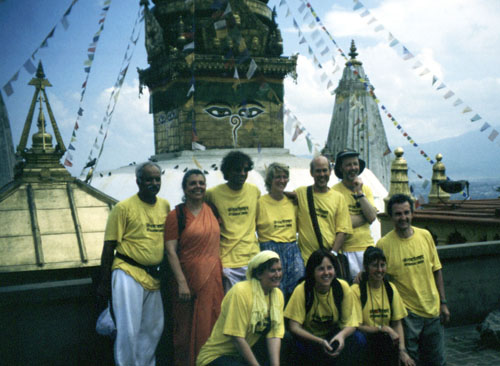 |
|
Swayambhunath
Yatris from left to right, starting at the back:
|
|
|
|
Boudhanath One of the world's largest stupas, Boudha is generally acknowledged to be the most important Tibetan Buddhist monument outside Tibet. Tibetans call it Chörten Chempo, "Great Stupa" The dome is elevated on three twenty-cornered plinths of decreasing size, which reinforce the notion of the stupa as a mandala. Above the central spire with the all-seeing eyes of wisdom, rise the 13 steps to nirvana. 108 images are set in niches around the dome. Prayer wheels are mounted around the perimeter wall. It is said that each spin of a prayer wheel here is the equivalent of reciting the mantra embossed on it 11,000 times. |
 |
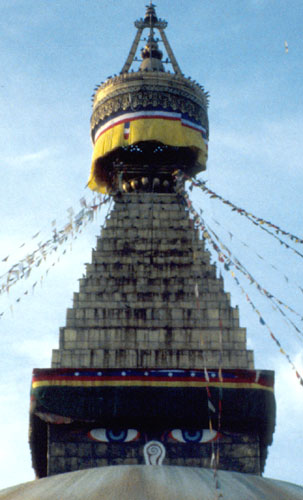 |
|
Boudhanath
|
|
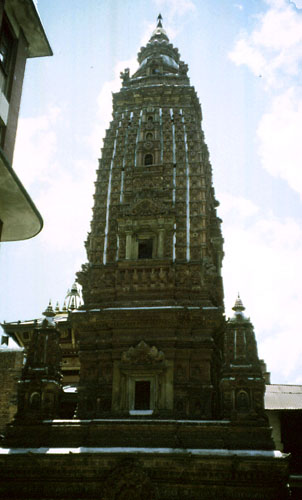 |
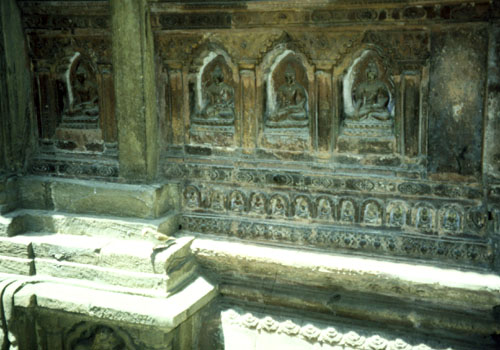 |
|
Stupa
of 10,000 Buddhas This stupa rised about 5 stories. Images of the Buddha cover the stupa facing all 4 directions. Detail of images on the right. |
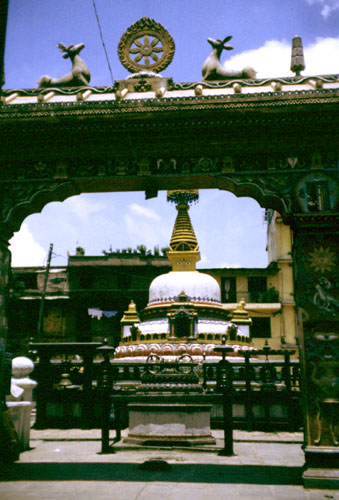 |
|
Stupa in a courtyard in Kathamandu |













